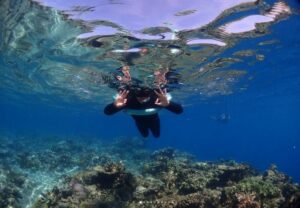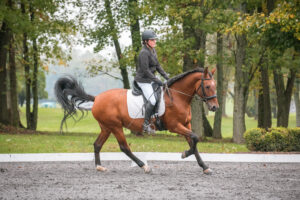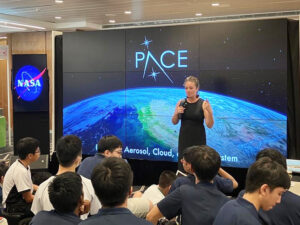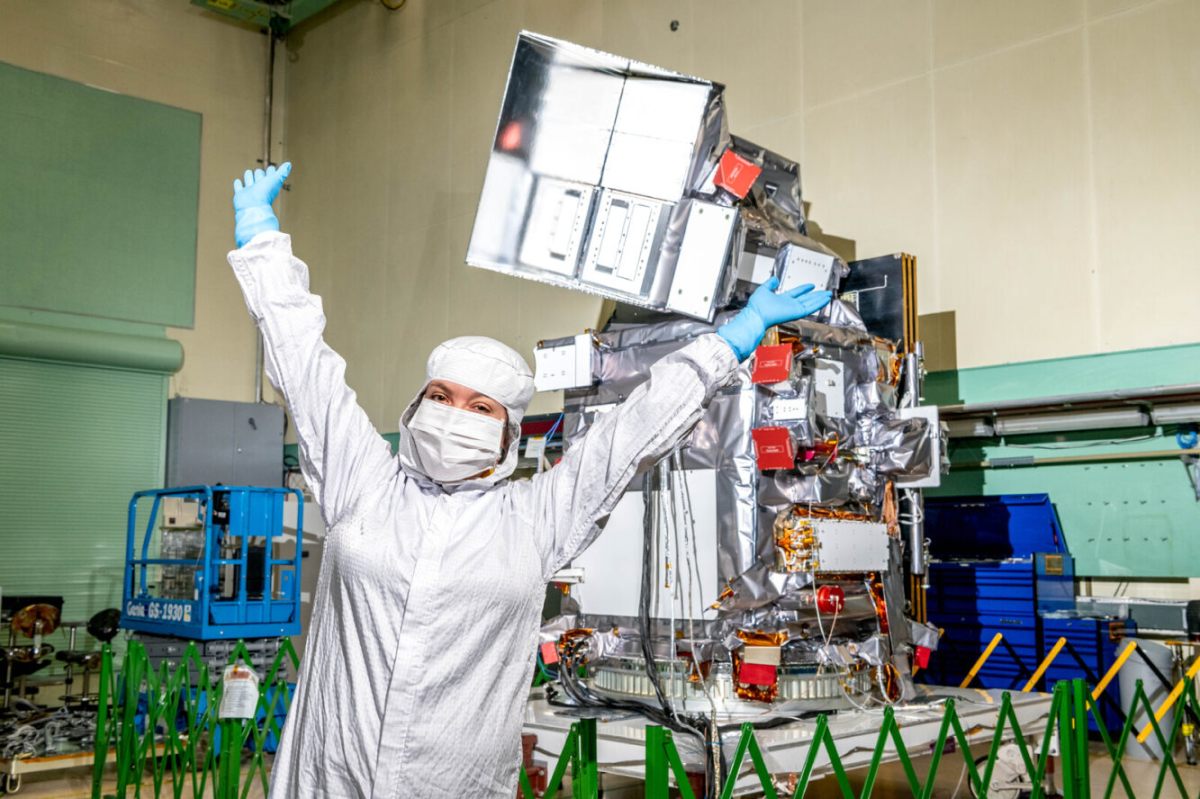Natasha Sadoff is the deputy coordinator for the applications program and PACE.
What is your favorite ocean or atmosphere related book or movie?
Probably “The Little Mermaid.” It’s a whole other world with the wildlife (and mermaids) in their own kingdom, so it just makes the ocean very magical.

What is your background?
I’m a social scientist and a geographer, and I have a broad background in environmental management. I think about the information and data that environmental managers might need, and how to translate data from a satellite in a way that makes it more usable and actionable for them. Part of my job is to serve as a liaison between the scientists and data managers working on PACE and the community of users that will put the data to use – and make sure that PACE data will be accessible, usable, and actionable for the community.
What are you most looking forward to during launch?
The energy at launch is just going to be crazy, with everybody who’s worked so hard for nearly two decades getting together. We’ll be happy once it’s in the air and in space and getting data, but when we’re at launch, it’s out of our hands. So, it’s a time to celebrate and be together and be excited.
I’m also excited because it’s a nighttime launch, scheduled for 1:30 in the morning, so I think that adds a neat air to it because it’s going to be so beautiful with the night sky. I’ve seen some photographs of other missions getting launched at night and it just seems like the visuals will be magnified in the middle of the night.
We know that OCI is going to be looking at all the different colors of the rainbow with its hyperspectral abilities. What is your favorite color and why?
I like the richness and depth of the blues and the purples. It makes me think of the nighttime or space!

What is a fun fact about yourself that not a lot of people might know about?
I have a horse and so most nights and weekends I am riding and training and working with my horse. Her name is Elena and she’s sassy. You know when people have a pet and it’s like their son, their daughter? People joke that Elena is my sister because she’s so opinionated and very stubborn. So, we have kind of a love/hate relationship in our training. She teaches me patience and resilience every day!

What advice would you give to aspiring scientists who are looking to get where you are today?
There’s not a linear path, and there doesn’t have to be a linear path. I know a few of us who don’t have the traditional science PhD background love to say this: There’s a role for everybody at NASA. Whether you’re in communications and marketing or whether you’re in science, or whether you’re somewhere in between (which is kind of like me), there’s a role for you at NASA. While STEM is obviously huge and critical and we need more women and we need more minorities in STEM, we also need people in the social sciences. STEM is only as good as our ability to communicate about it and talk to people about it.
Header image caption: Before the PACE observatory left for Kennedy, Natasha had the opportunity to get into a “bunny-suit” and experience what it was like to enter the PACE clean room! Credit: Denny Henry
By Erica McNamee, Science Writer at NASA’s Goddard Space Flight Center

